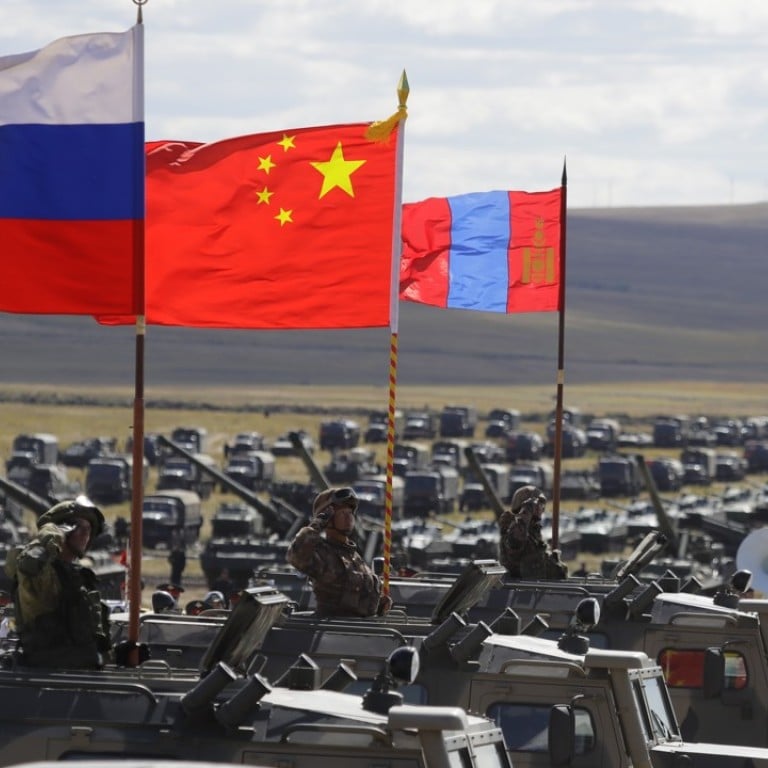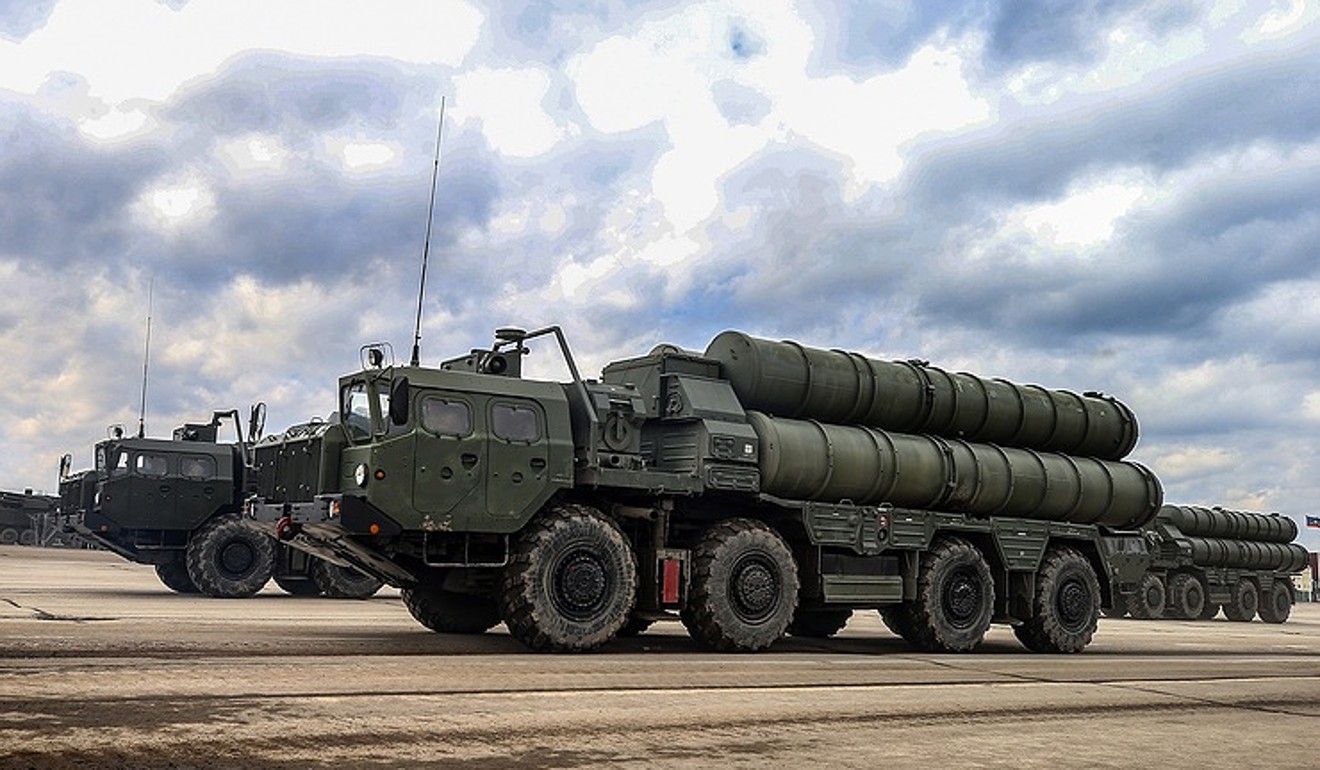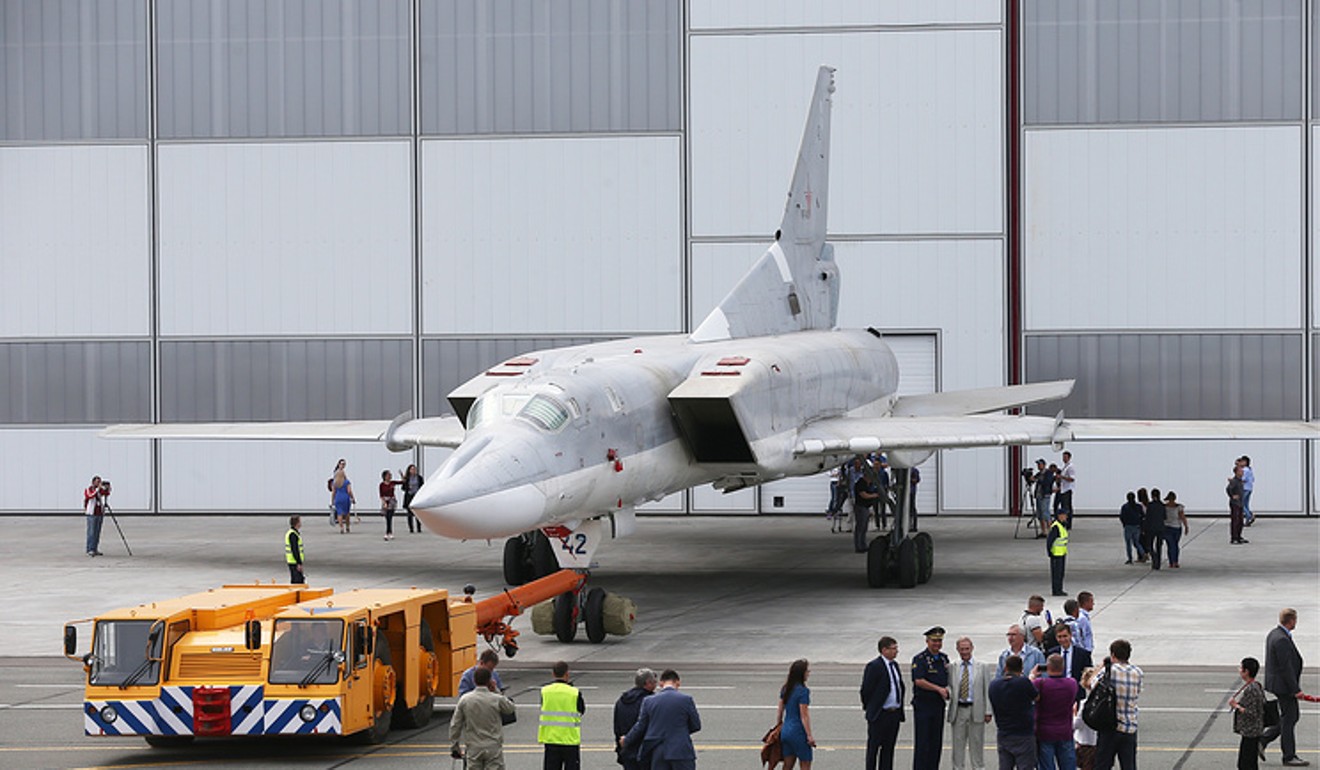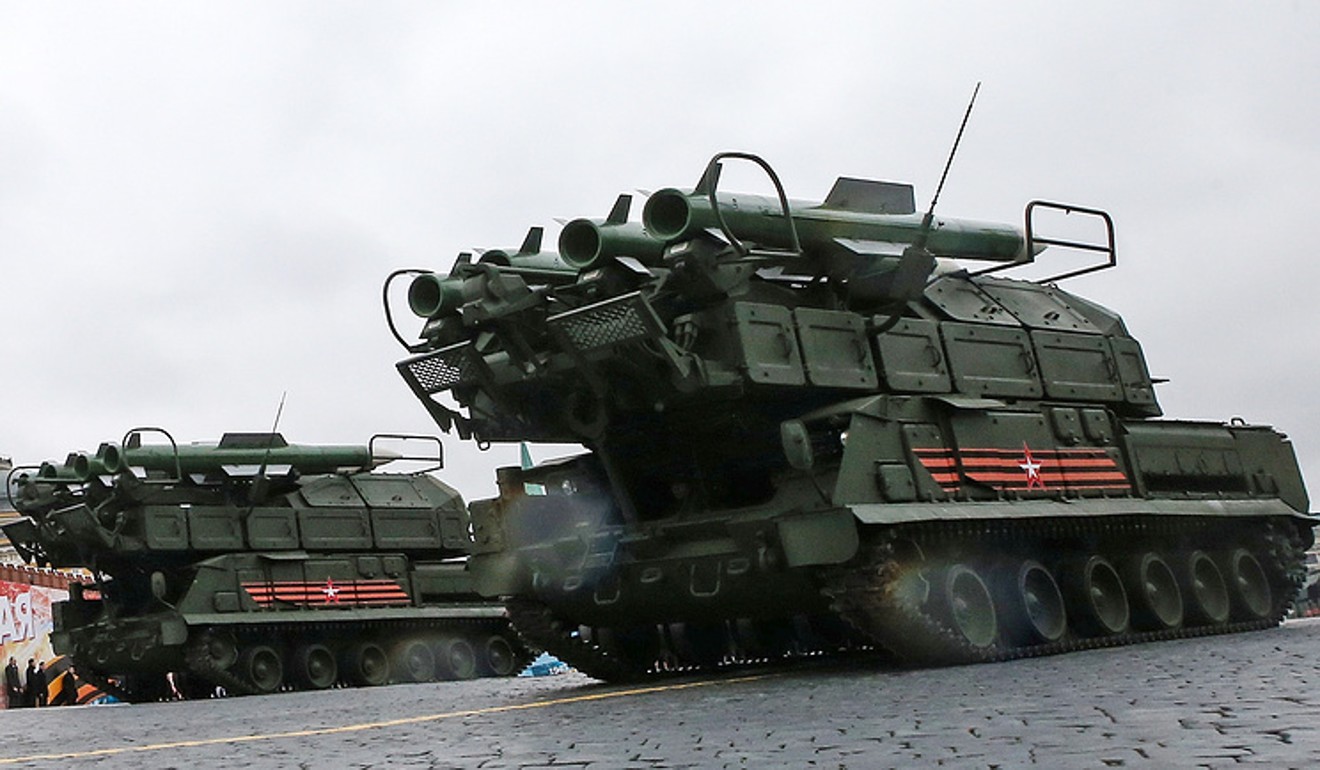
Russia rolls out advanced weapons during Vostok 2018 military drills with China
Jets, bombers, tanks and missile systems are among the hardware on display in the exercises
As Russia participates in its biggest military exercise together with China and Mongolia – Vostok 2018, which began on Tuesday – it is demonstrating some of its advanced weaponry.
The week-long drills, in Russia’s far east and the Pacific Ocean, involve about 300,000 service members; more than 1,000 planes, helicopters and unmanned aerial vehicles; 36,000 tanks, armoured fighting vehicles and other cars; and up to 80 ships and support vessels.
China has sent nearly 3,200 troops, 900 weapons and 30 fixed-wing aircraft and helicopters to the exercise.
Russia’s advanced Sukhoi Su-35 fighter jets, Su-34 fighter bombers, Tu-90s main battle tanks and China’s Type 99 main battle tanks are also being practised at in the drills.
Here are examples of other weapons being tried out at Vostok.
Iskander-M missile
The nuclear-capable Isakander-M is one of Russia’s hypersonic missile launch system, firing missiles travelling at the velocity of Mach 6 (six times the speed of sound), which are very difficult to defend against or intercept.
For Vostok 2018, some of Iskander-M missile crews were redeployed by rail to the Astrakhan region near the Caspian Sea, far from the Tsugol training ground in the Buryatia Republic close to China and Mongolia, where the main drills are taking place, according to the Russian defence Ministry.

“During one of the episodes of the drills, Iskander-M missile crews will carry out a missile strike to destroy targets at a distance of several hundred of kilometres,” the ministry said in a statement.
Apart from a payload of 500kt-yield thermonuclear warheads, the road-mobile missile system is also able of carrying several conventional warheads, including high explosives, earth penetrators, fuel-air explosives and electromagnetic pulse devices.
The system can launch 500km (310 mile) range ballistic missiles or R-500 cruise missiles.
S-400 air defence missile
Russia’s most advanced S-400 anti-aircraft missiles have been demonstrated in the drills.
As one of the world’s top air defence systems, the S-400 includes missiles with different ranges, from 40km to 400km, and can hit targets from altitude of 10m to 30km to form a multi-layer full coverage of defence.

It adopted advanced radar that improves its capability to detect stealth aircraft and counter electronic jamming. The maximum speed of the target it can hit is 4,800m/s, or Mach 15.
One system of S-400 comprises up to 72 launchers with 384 missiles. It can track 300 targets at the same time and attack 36 at once.
This year, Russia delivered to China first of S-400 regimental sets as per a contract signed in 2014. It is also set to sell the S-400 to Turkey, which has raised concerns within Nato.
Tupolev Tu-95MC and Tu-22M bombers
First flown in 1952, Tu-95 is the world’s only propeller strategic bomber still active. It carried out a number of important nuclear tests during the cold war, including the dropping and detonation of the most powerful nuclear weapon ever created – the Tsar Bomba. Tu-95’s most recent combat engagement was an air strike mission in Syria in 2015.
Tu-22M was developed as a maritime and strategic bomber and introduced in the 1970s. It was used by the Soviet in combat in Afghanistan and remains the primary combat bomber in the Russian air force, playing an important role in military campaigns in Chechnya, Georgia and Syria.

Although dated, the Tu-95MS and Tu-22M are still an important part of Russia’s strategic deterrence forces as they have resumed patrols and simulated attacks since 2007. They also frequently fly together in many Russian military exercises.
Buk M2 air-defence missile
Buk is one of the world’s best mid-range air-defence missiles. Its previous types have been used to shoot down a number of aircraft, including Malaysia Airlines’ MH-17 passenger flight over eastern Ukraine in 2014, killing all 283 passengers and 15 crew members on board.

The M2 variation of Buk was introduced to the Russian military in 2008. With four multi-functional 9M317 missiles on one launcher, the Buk M2 has a 45km range and 25km altitude. Its new generation of radar can lock on targets from 95km away and attack four targets separately. It also improved to hit low-altitude targets incoming from a much larger range of angles.

